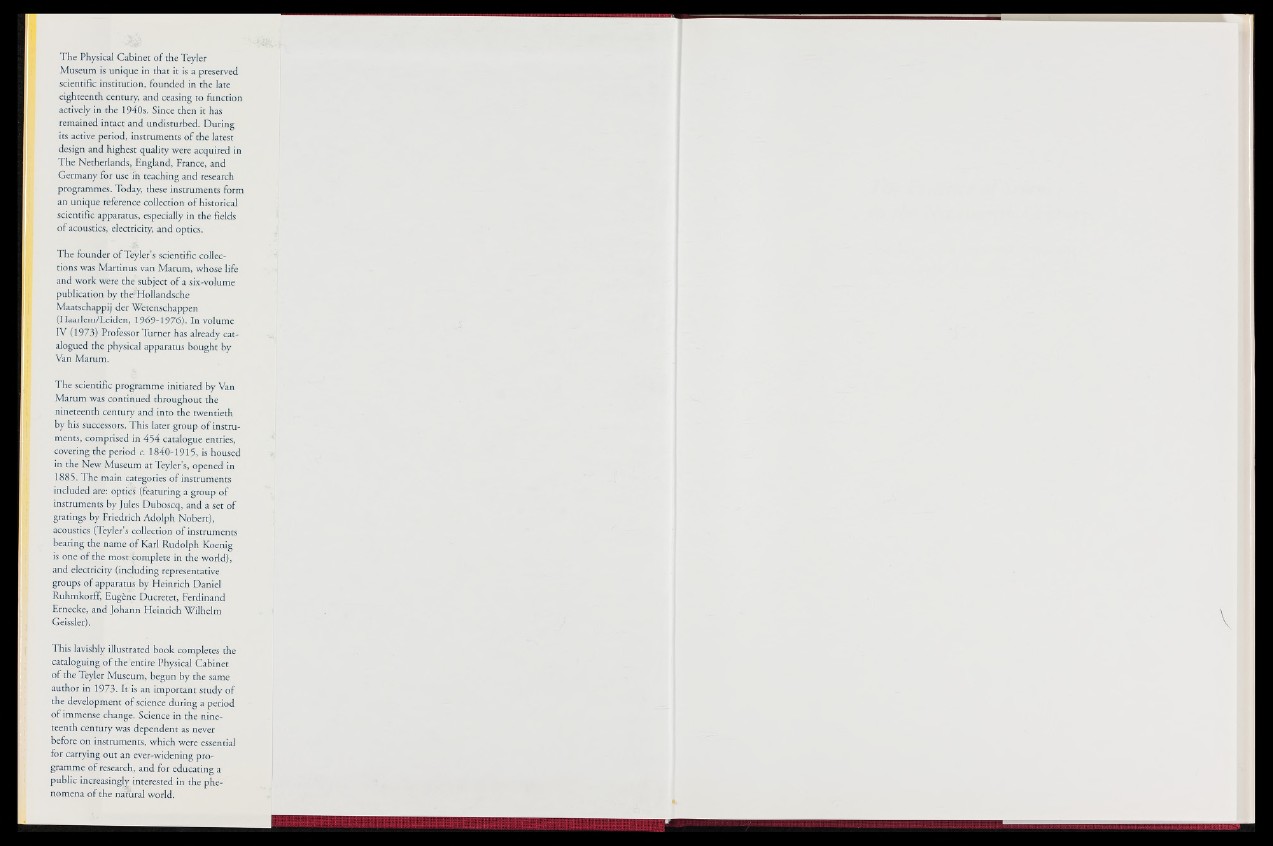
The Physical Cabinet of the Teyler
Museum is unique in that it is a preserved
scientific institution, founded in the late
eighteenth century, and ceasing to function
actively in the 1940s. Since then it has
remained intact and undisturbed. During
its active period, instruments of the latest
design and highest quality were acquired in
The Netherlands, England, France, and
Germany for use in teaching and research
programmes. Today, these instruments form
an unique reference collection of historical
scientific apparatus, especially in the fields
of acoustics, electricity, and optics.
The founder of Teyler's scientific collections
was Martinus van Marum, whose life
and work were the subject of a six-volume
publication by the-Holiandsche
Maatschappij der Wetenschappen
(Haarlem/Leiden, 1969-1976). In volume
IV (1973) Professor Turner has already catalogued
the physical apparatus bought by
Van Marum.
The scientific programme initiated by Van
Marum was contihued throughout the
nineteenth century and into the twentieth
by his successors. This later group of instruments,
comprised in 454 catalogue entries,
covering the period c. 1840-1915, is housed
in the New Museum at Teyler's, opened in
1885. The main categories of instruments
included are: optidj (featuring a group of
instruments by Jules Duboscq, and a set of
gratings by Friedrich Adolph Nobert),
acoustics (Teyler's collection of instruments
bearing the name of Karl Rudolph Koenig
is one of the mostibomplete in the world),
and electricity (including representative
groups of apparatus by Fleinrich Daniel
Ruhmkorff, Eugène Ducretet, Ferdinand
Ernecke, and Johann Heinrich Wilhelm
Geissler).
This lavishly illustrated book completes the
cataloguing of the entire Physical Cabinet
of the Teyler Museum, begun by the same
author in 1973. It is an important study of
the development of science during a period
of immense change. Science in the nineteenth
century was dependent as never
before on instruments, which were essential
for carrying out an ever-widening programme
of research, and for educating a
public increasingly interested in the phenomena
of the nafiiral world.